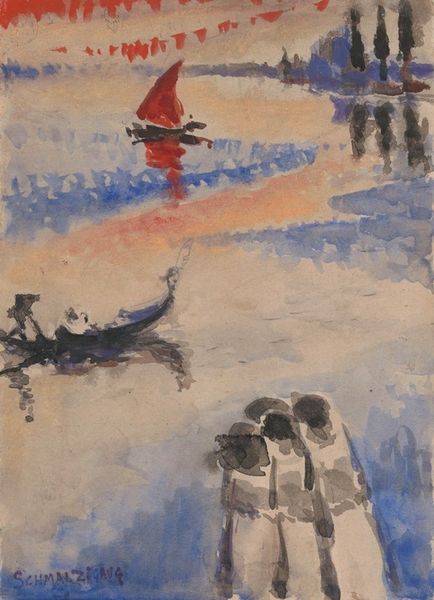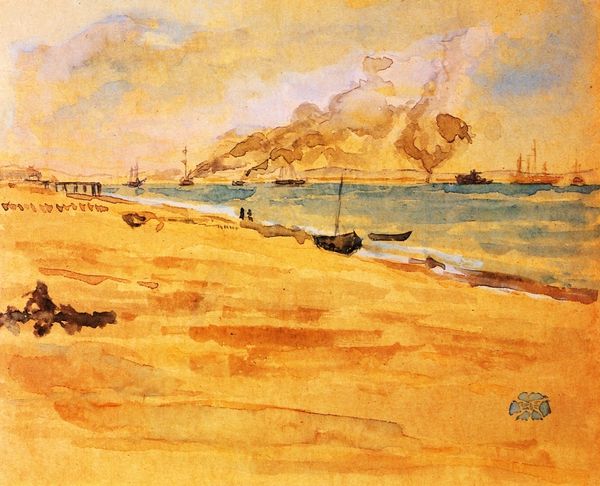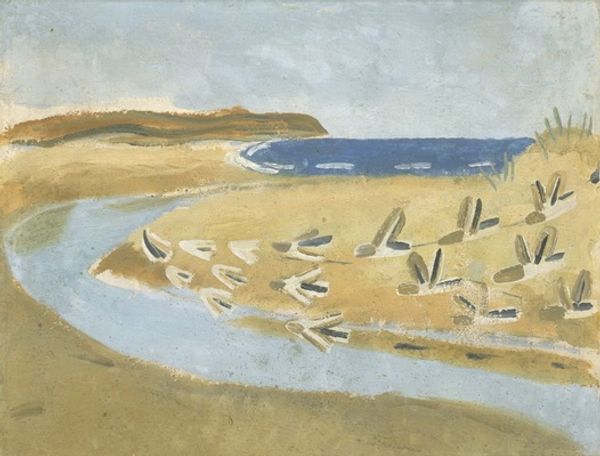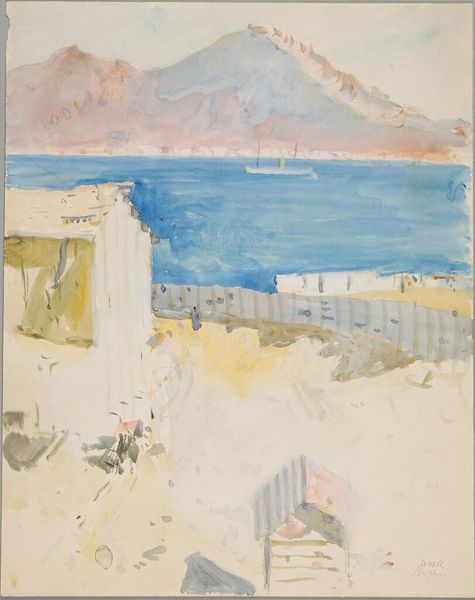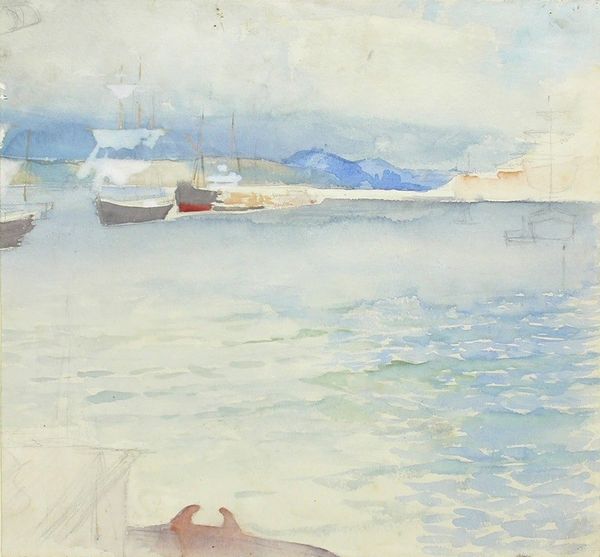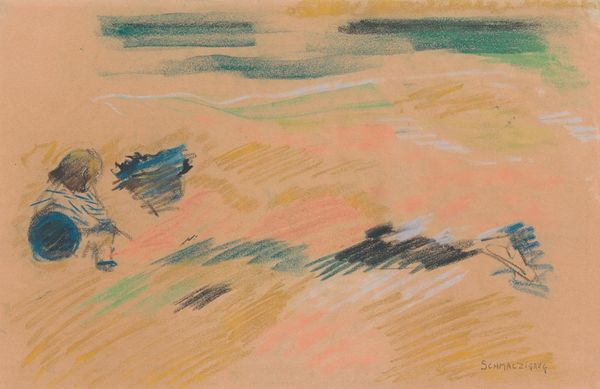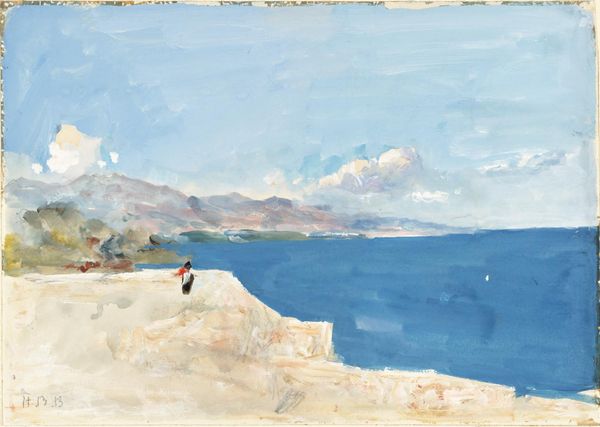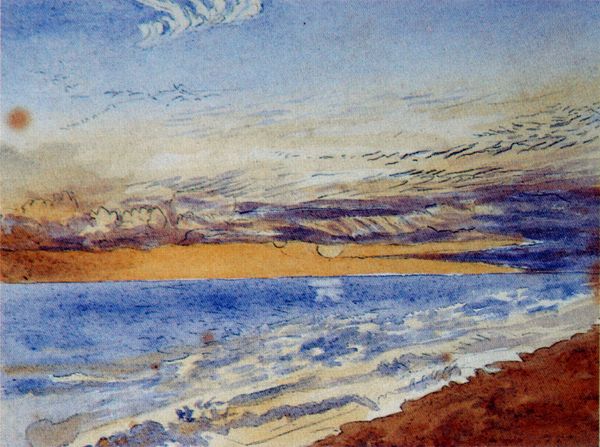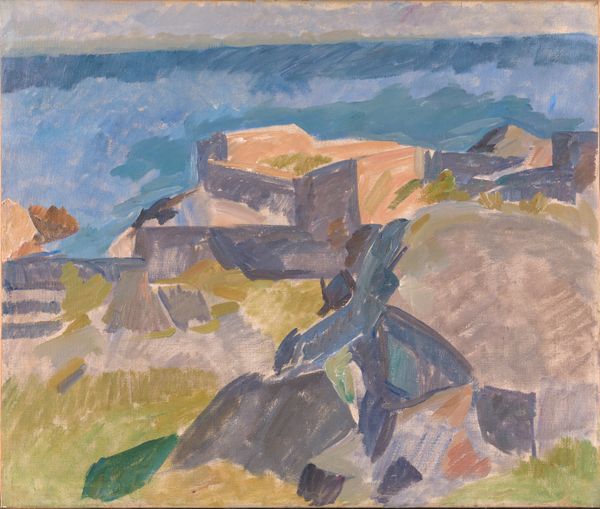
Copyright: John Marin,Fair Use
Editor: This is John Marin's "From Seeing Cape Split," painted in 1935, in oil. The way he's captured the coastline feels so dynamic, almost agitated. What do you see in this piece, beyond the literal depiction of the cape? Curator: Immediately, the angularity strikes me. Marin uses these sharp, almost fractured shapes not just to represent the landscape, but also the *feeling* of it. Look how the jagged strokes evoke the raw energy of the ocean and cliffs, rather than a serene seascape. The symbolic boat speaks of the fleeting nature of life, in constant motion against these old cliffs that remember what was. Editor: So, it's not just about the place itself, but about a deeper, more emotional connection? Curator: Precisely! Marin gives visual form to this deeper relationship, to a kind of primal energy that exists between the land, the sea, and human experience. Ask yourself: what stories do you feel as a person engaging with the landscape? The buildings are not people, but recall people. A cultural memory made of buildings facing the ocean. Editor: The colors, especially that deep blue, definitely add to that sense of intensity. It’s not a calm blue, but more of a powerful, almost threatening one. Curator: And consider that in Expressionism, colors often represent inner states rather than external reality. That particular shade of blue can symbolize depth, uncertainty, but also the subconscious – what is just out of grasp from waking awareness. Editor: I hadn’t thought of it that way, seeing the landscape as a reflection of internal states. It makes me rethink how I look at landscapes generally. Curator: Indeed. Marin gives us a visual language, steeped in the symbols of nature, to explore our own emotional geography. What cultural or emotional elements are being passed down to each subsequent generation? How are cultural and emotional touchstones linked in memory? Editor: It's fascinating how he manages to pack so much emotion and meaning into what seems, at first glance, like a straightforward landscape painting. Curator: Sometimes, it’s through deconstructing the "straightforward" that the most profound connections emerge. By looking at the fragments we see ourselves in parts of a bigger narrative.
Comments
No comments
Be the first to comment and join the conversation on the ultimate creative platform.
